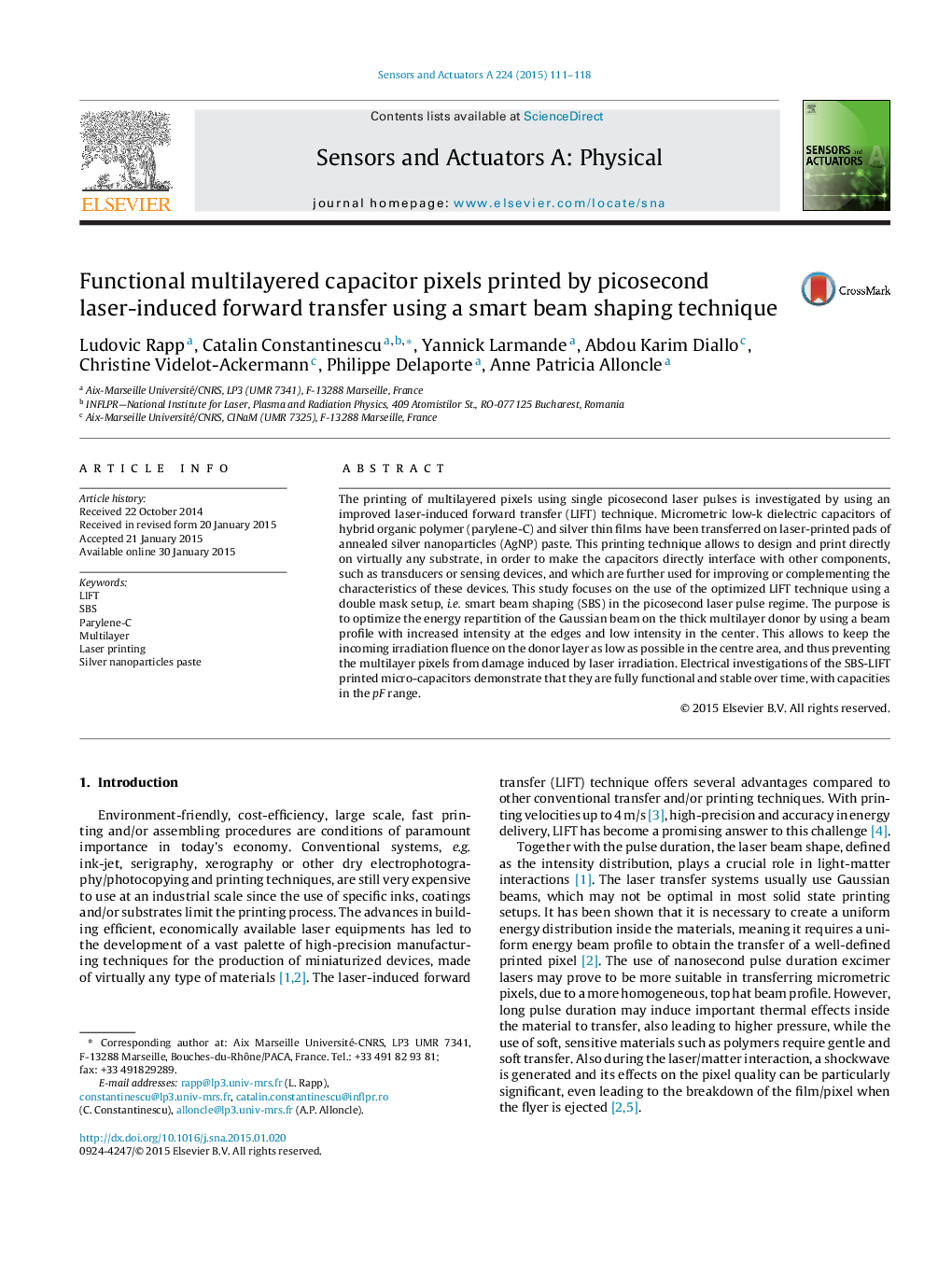| Article ID | Journal | Published Year | Pages | File Type |
|---|---|---|---|---|
| 736888 | Sensors and Actuators A: Physical | 2015 | 8 Pages |
•Laser-induced transfer is used in printing multilayered micro-capacitor pixels.•A beam shaping technique is used to improve the laser-induced transfer of pixels.•The dielectric film is made of parylene-C, and the electrodes are made of silver.•The structure and electrical properties of the capacitors are discussed.
The printing of multilayered pixels using single picosecond laser pulses is investigated by using an improved laser-induced forward transfer (LIFT) technique. Micrometric low-k dielectric capacitors of hybrid organic polymer (parylene-C) and silver thin films have been transferred on laser-printed pads of annealed silver nanoparticles (AgNP) paste. This printing technique allows to design and print directly on virtually any substrate, in order to make the capacitors directly interface with other components, such as transducers or sensing devices, and which are further used for improving or complementing the characteristics of these devices. This study focuses on the use of the optimized LIFT technique using a double mask setup, i.e. smart beam shaping (SBS) in the picosecond laser pulse regime. The purpose is to optimize the energy repartition of the Gaussian beam on the thick multilayer donor by using a beam profile with increased intensity at the edges and low intensity in the center. This allows to keep the incoming irradiation fluence on the donor layer as low as possible in the centre area, and thus preventing the multilayer pixels from damage induced by laser irradiation. Electrical investigations of the SBS-LIFT printed micro-capacitors demonstrate that they are fully functional and stable over time, with capacities in the pF range.
